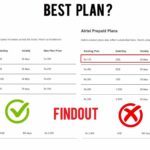Gaining muscle while on a calorie deficit might sound like trying to juggle flaming torches—challenging but entirely possible with the right approach. Whether you’re aiming to shed some fat while maintaining or even building muscle, this guide will walk you through effective strategies, including supplements, periodization, and training techniques.

How to Use Supplements for Muscle Gain in a Calorie Deficit
Supplements can be a game-changer when you’re in a calorie deficit. They help ensure you get the nutrients needed for muscle growth despite reduced food intake.
1. Protein Powders
- Whey Protein: A fast-digesting protein that supports muscle repair and growth. Ideal for post-workout recovery.
- Casein Protein: Slower digestion helps with sustained protein delivery, perfect for bedtime.
- Plant-Based Proteins: Great alternatives for those avoiding dairy. Options include pea, hemp, and soy protein.
2. Branched-Chain Amino Acids (BCAAs)
BCAAs—leucine, isoleucine, and valine—are essential for muscle recovery and reducing soreness. They can be particularly useful if your overall calorie intake is low.
3. Creatine
Creatine helps increase strength and muscle mass by replenishing ATP (energy) stores in your muscles. Even in a calorie deficit, it can aid in maintaining workout intensity and muscle volume.
4. Beta-Alanine
This supplement helps buffer acid in muscles, reducing fatigue during high-intensity workouts. It’s useful for maintaining performance in a calorie deficit.
5. Fish Oil
Rich in omega-3 fatty acids, fish oil supports muscle recovery and reduces inflammation, helping you stay on track with your fitness goals.
Tips for Supplement Use
- Quality Matters: Choose high-quality supplements from reputable brands.
- Dosage: Follow recommended dosages for effectiveness and safety.
- Balance: Supplements should complement a balanced diet, not replace it.
How to Use Periodization for Muscle Gain in a Calorie Deficit
Periodization is a training strategy where you cycle through different phases of training to maximize gains and prevent plateaus. Here’s how to use it effectively in a calorie deficit:
1. Plan Your Phases
- Hypertrophy Phase: Focus on muscle growth with moderate weights and higher reps (8-12 reps).
- Strength Phase: Shift to heavier weights and lower reps (4-6 reps) to maintain strength.
- Endurance Phase: Incorporate lighter weights and higher reps (15-20 reps) to build muscular endurance and support overall conditioning.
2. Adjust Training Intensity
- High Volume: During hypertrophy phases, include more sets and exercises.
- Low Volume: During strength phases, reduce the volume but increase intensity.
3. Incorporate Recovery
- Deload Weeks: Every few weeks, reduce the intensity and volume to allow your muscles to recover and adapt.
4. Monitor Progress
- Adjust as Needed: If you’re not seeing the results you want, adjust your training phases or nutritional intake accordingly.
How to Increase Training Volume for Muscle Gain in a Calorie Deficit
Increasing training volume can help maintain muscle mass even in a calorie deficit, but it needs to be done carefully.
1. Add More Sets and Reps
- Increase Sets: Add additional sets to your exercises to boost overall training volume.
- Increase Reps: Include higher rep ranges in your workouts to enhance muscle endurance.
2. Incorporate Supersets and Drop Sets
- Supersets: Perform two exercises back-to-back with no rest in between to maximize muscle fatigue.
- Drop Sets: After reaching failure, reduce the weight and continue the set to fully exhaust the muscle.
3. Adjust Rest Periods
- Shorter Rest Periods: Reduce rest intervals between sets to increase the overall intensity and volume of your workout.
4. Use Volume Cycling
- Periodize Volume: Alternate between high-volume and low-volume weeks to prevent overtraining and support muscle growth.
How to Manage Energy Levels While Gaining Muscle in a Calorie Deficit
Maintaining energy levels is crucial when you’re cutting calories but still want to build muscle.
1. Eat Nutrient-Dense Foods
Focus on foods that provide essential vitamins and minerals with fewer calories, such as vegetables, lean proteins, and whole grains.
2. Stay Hydrated
Dehydration can cause fatigue. Drink plenty of water throughout the day to stay hydrated and support overall energy levels.
3. Balance Macronutrients
Ensure your diet includes a balance of protein, fats, and carbohydrates to sustain energy and support muscle growth.
4. Get Quality Sleep
Aim for 7-9 hours of sleep per night to recover and maintain energy levels.
How to Prioritize Compound Movements for Muscle Gain in a Calorie Deficit
Compound movements are key to maximizing muscle gain, especially when calories are restricted.
1. Focus on Major Lifts
- Squats: Target the lower body and core.
- Deadlifts: Work multiple muscle groups, including the back, legs, and core.
- Bench Press: Develop chest, shoulders, and triceps.
- Rows: Strengthen the back and biceps.
2. Incorporate Multi-Joint Exercises
Multi-joint exercises engage multiple muscles and are more effective for muscle growth than isolation exercises.
3. Use Proper Form
Maintain correct form to avoid injuries and ensure you’re targeting the intended muscle groups.
How to Use Carbohydrate Cycling for Muscle Gain in a Calorie Deficit
Carbohydrate cycling involves adjusting your carbohydrate intake based on your training demands.
1. High-Carb Days
- Purpose: Provide extra energy for intense training days.
- Implementation: Consume more carbs on days with high-intensity workouts or heavy lifting.
2. Low-Carb Days
- Purpose: Promote fat loss and manage calorie intake.
- Implementation: Reduce carb intake on rest days or low-intensity workout days.
3. Moderate-Carb Days
- Purpose: Maintain energy and support recovery.
- Implementation: Consume a moderate amount of carbs on days with moderate activity.
4. Monitor and Adjust
Track how your body responds to different carb levels and adjust as needed to align with your muscle gain goals.
How to Increase Intensity for Muscle Gain in a Calorie Deficit
Increasing intensity can help stimulate muscle growth despite a calorie deficit.
1. Use Advanced Training Techniques
- Drop Sets: Continue a set after reaching failure by reducing the weight.
- Supersets: Pair exercises to increase workout intensity.
- Pyramid Sets: Gradually increase and then decrease the weight in a set.
2. Incorporate High-Intensity Interval Training (HIIT)
HIIT can boost overall fitness and maintain muscle while in a calorie deficit.
3. Shorten Rest Periods
Reduce rest time between sets to keep intensity high and maximize muscle fatigue.
How to Use Bodyweight Exercises for Muscle Gain in a Calorie Deficit
Bodyweight exercises are a great way to build muscle without heavy weights.
1. Push-Ups
A versatile exercise targeting the chest, shoulders, and triceps. Variations like decline push-ups can increase intensity.
2. Pull-Ups/Chin-Ups
Effective for working the back and biceps. Use assistance if necessary to perform these exercises.
3. Squats and Lunges
Target the lower body and can be made more challenging by adding variations or increasing the volume.
4. Planks
Strengthen the core and can be modified to increase difficulty.
How to Maintain Lean Muscle Mass While in a Calorie Deficit
Maintaining lean muscle mass is crucial for a toned physique and overall strength.
1. Prioritize Protein Intake
Ensure you’re consuming enough protein to support muscle maintenance and repair.
2. Engage in Regular Resistance Training
Keep up with your resistance training routine to continue stimulating muscle growth.
3. Avoid Excessive Caloric Deficit
A moderate deficit helps in losing fat while preserving muscle mass.
4. Monitor Muscle Mass
Regularly track changes in muscle mass to ensure you’re maintaining lean muscle.
How to Stay Consistent When Gaining Muscle in a Calorie Deficit
Consistency is key to achieving muscle gain goals.
1. Set Clear Goals
Define your goals to stay focused and motivated.
2. Plan Your Meals and Workouts
Create a structured plan for both nutrition and exercise to stay on track.
3. Track Your Progress
Keep a record of your workouts, diet, and muscle growth to monitor your progress and make necessary adjustments.
4. Stay Flexible
Be prepared to adjust your plan as needed based on your progress and any changes in your body.
Conclusion
Gaining muscle while in a calorie deficit requires a thoughtful approach to diet, supplements, and training. By incorporating strategies such as using supplements, periodizing your training, and managing your energy levels, you can effectively build muscle and maintain strength. Focus on compound movements, adjust carbohydrate intake, and stay consistent with your efforts. With the right strategies in place, you’ll be well on your way to achieving your fitness goals even in a calorie deficit. Keep pushing forward, and remember, persistence and adaptation are your best allies in this journey!











